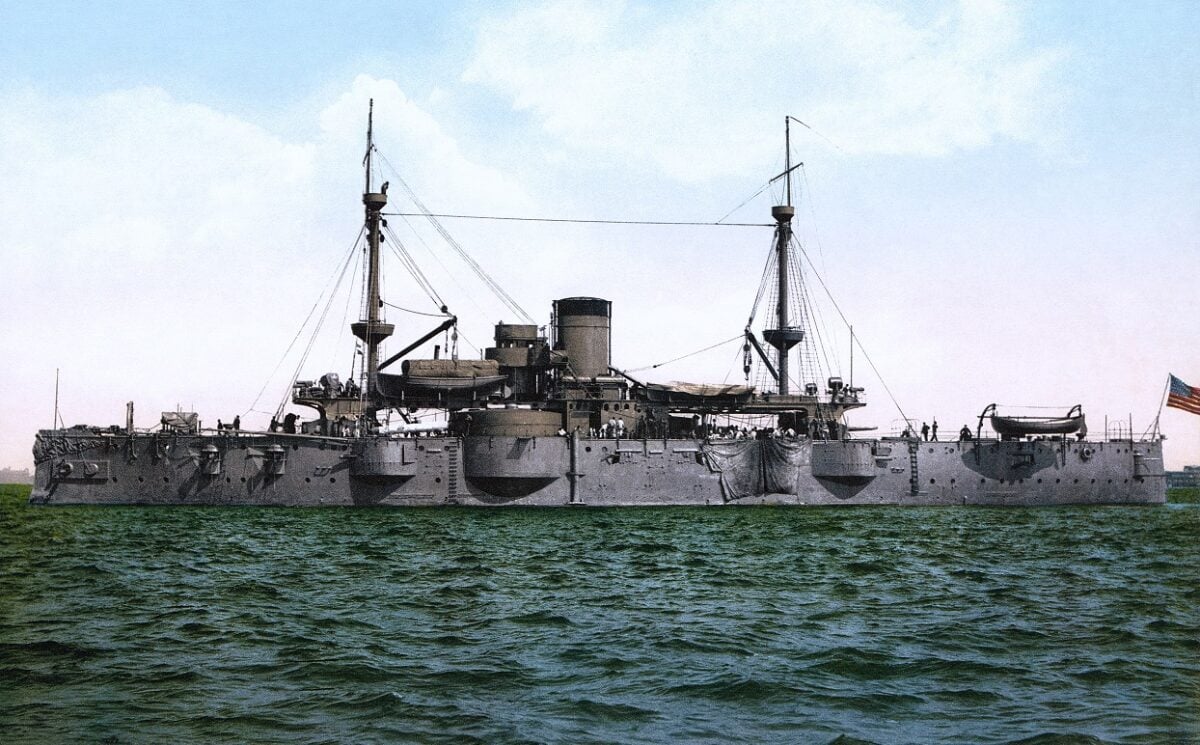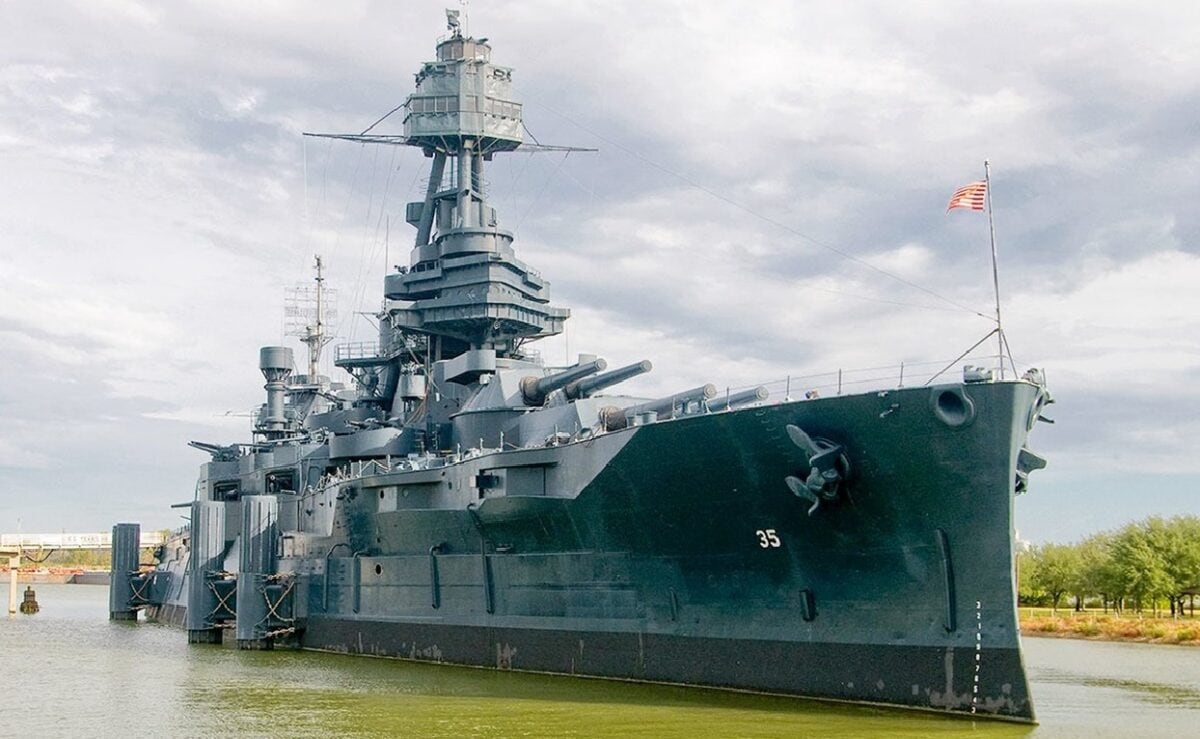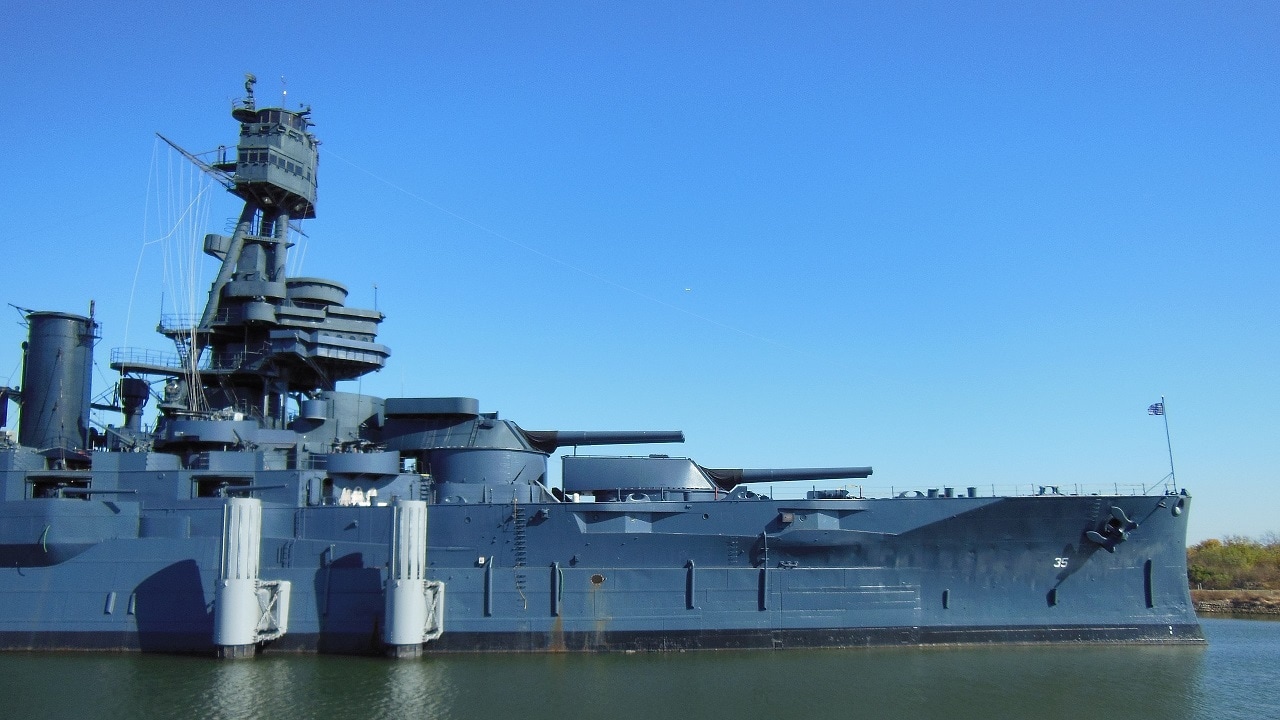Battleship USS Texas Prepares to Say Farewell to San Jacinto – Once described as “the most powerful weapon in the world,” the USS Texas (BB-35) looks a lot worse for wear. Time and the elements have not been kind to the once majestic warship that even today remains the “official” flagship of the “Texas Navy.”
As the first permanent battleship memorial museum in the United States, BB-35 has been moored in the Houston Ship Channel near the San Jacinto battleground site – the location where Texian troops led by Gen. Sam Houston surprised and quickly defeated the Mexican Army in 1836 – for more than seventy years. But soon she will head to a new home on the Texas coast after some much-needed TLC.
Numerous leaks in the hull required that the ship be closed, except on special occasions. This past weekend was one of those, as the ship was open a final time to the public as soon she will be moved to a dry dock in Galveston to undergo major repairs. She will be placed on a massive dry dock, and the holes will be patched.
Preserving the warship has never been questioned, as the Battleship Texas is one of the Lone Star State’s biggest tourist attractions. What is questioned is where the ship will head following those repairs. Three cities are now competing for the honor of giving the USS Texas a new home, and those include Baytown, Beaumont, and Galveston.
History of the USS Texas
Completed in 1914, USS Texas (BB-35), along with her sister ship USS New York (BB-34), were the first warships designed to carry 14-inch (356mm/45-caliber) guns. BB-35 is also notable for being the only battleship still in existence today to have taken part in combat operations in both World Wars.
The New York-class warship was first sent into service during the “ Tampico Incident,” which involved the United States’ occupation of Vera Cruz during the Mexican Revolution. The battleship then began fleet operations after the United States entered the First World War in the spring of 1917. A generation later, she escorted war convoys across the Atlantic and provided support for the beach landings at Normandy Beach on D-Day and later at the Battles of Iwo Jima and Okinawa. She earned a total of five battle stars for her service in the Second World War.
Noteworthy Improvements
In addition to an impressive combat record, USS Texas was also noteworthy for the technological improvements and advancements that were made during the course of service with the U.S. Navy. When she and her sister warship were constructed, U.S. turbine manufacturers were unwilling to meet the strict specifications laid down by the Navy Department’s Bureau of Ships. Since no compromise could be met on standards and prices, the Bureau had to revert to the older reciprocating engines used for the New York-class battleships. However, those engines were initially described as “the ultimate in naval reciprocating engine construction.”
The use of the machinery actually may have given up to 30 percent improvement in the economy at cruising speed, and in no way was inferior at full speed. The two 4-cylinder Vertical Triple Expansion engines and 14 Babcock & Wilcox coal-fired billers could provide more than 28,000 horsepower, which enabled the battleships to reach 21 knots with a range greater than 7,000 nautical miles.
Naval Testbed
Following the First World War, USS Texas proved to be the perfect testbed for the U.S. Navy, and in March 1919 she became the first American battleship to fly off an aircraft, when Lieutenant Commander Edward O. McDonnell flew a British Sopwith Camel from a temporary platform that had been fitted atop her second turret.
Later that same year, she became the first U.S. battleship to mount anti-aircraft guns.
The warship subsequently underwent a major reconstruction from 1925 to 1927, and the ship was reboilered with six Bureau-Express oil-fired units. Other improvements were made to her combat systems, and she was the first U.S. battleship to mount anti-aircraft guns and the first U.S. vessel to control gunfire with directors and range-keepers. Following the modernization, Texas alternated operations between the Atlantic and Pacific Oceans until 1931, when her base was shifted to California. BB-35 served as the fleet and division flagship during U.S. Fleet exercises and in 1937 was reassigned again to the Atlantic.
Back to War
When the Second World War broke out in Europe, the USS Texas along with her sister battleship USS New York began operating the Neutrality Patrol, and later as the United States moved towards more active support of the Allied war effort, the warship began convoying ships carrying Lend-Lease material to the United Kingdom.
Despite being among the oldest U.S. warships in service, Texas proved she still had fight left in her when she took part in her first combat operations of the Second World War as part of Task Group 34.8 (TG 34.8) in support of Operation Torch, the Allied invasion of North Africa.

Image: Creative Commons.

Image: Creative Commons.
It was from the aging battleship that Lt. General Dwight D. Eisenhower transmitted his first “Voice of Freedom” broadcast, which called up the Vichy French forces not to oppose the Allied landings. As a young news reporter, Walter Cronkite was also among those onboard the battleship during the operations and was even granted permission to fly off of the ship in one of her OS2U Kingfisher aircraft.
The aging battleship returned to Atlantic convoy escort duties and later was among the warships to provide supporting fire during the Normandy landings. She also participated in the subsequent bombardment of Cherbourg, during which she was hit by enemy coastal artillery fire but suffered no serious damage. After undergoing repairs in Plymouth, England she took part in the allied invasion of the South of France during Operation Dragoon.
Following an overhaul in New York City, which involved replacing her main battery barrels; USS Texas returned to the Pacific, where the “Old Lady” of the fleet provided naval gunfire support during the Battles of Iwo Jima and Okinawa. In the Battle of Okinawa, the crew of the USS Texas was forced to spend more than 50 days confined to battle stations in gun turrets and compartments deep within the ship.

Image: Creative Commons.
Given such a noteworthy service record, it is easy to see why the sons and daughters of the Lone Star State want to preserve USS Texas and ensure future generations will be able to walk her decks and learn of the stories of the only warship left that saw service in both World Wars.
Now a Senior Editor for 1945, Peter Suciu is a Michigan-based writer who has contributed to more than four dozen magazines, newspapers and websites. He regularly writes about military hardware, and is the author of several books on military headgear including A Gallery of Military Headdress, which is available on Amazon.com. Peter is also a Contributing Writer for Forbes.

